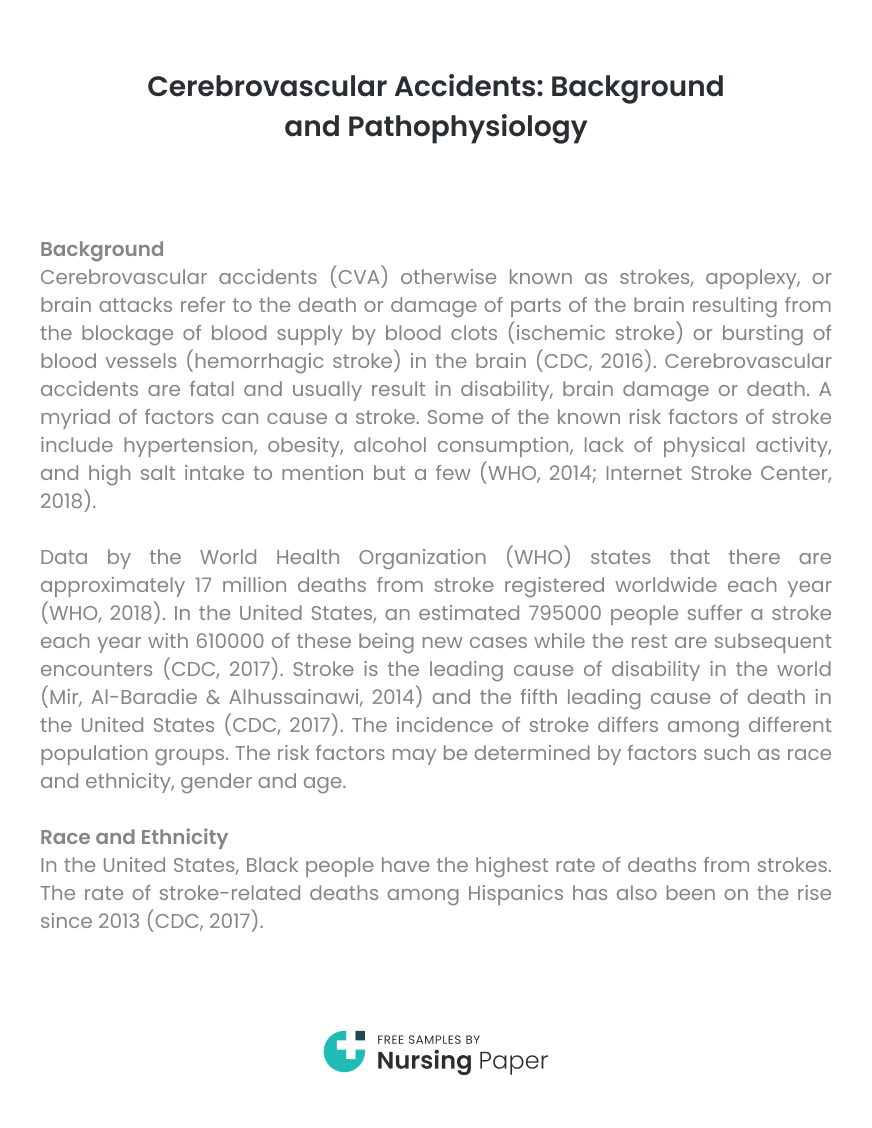1. African-American Men and Stroke. (2016) (pp. 1-2). Retrieved from https://www.cdc.gov/stroke/docs/aa_men_stroke_factsheet.pdf
2. African-American Women and Stroke. (2016) (pp. 1-2). Retrieved from https://www.cdc.gov/stroke/docs/aa_women_stroke_factsheet.pdf
3. CDC. (2016). About Stroke. Cdc.gov. Retrieved 1 April 2018, from https://www.cdc.gov/stroke/about.htm
4. CDC. (2017). Stroke Facts. Cdc.gov. Retrieved 1 April 2018, from https://www.cdc.gov/stroke/facts.htm
5. Hispanics and Stroke. (2016) (pp. 1-2). Retrieved from https://www.cdc.gov/stroke/docs/hispanics_stroke_factsheet.pdf
6. Internet Stroke Center. (2018). Stroke Statistics. Strokecenter.org. Retrieved 1 April 2018, from http://www.strokecenter.org/patients/about-stroke/stroke-statistics/
7. Ischemic Stroke. (2018). Strokecenter.org. Retrieved 1 April 2018, from http://www.strokecenter.org/patients/about-stroke/ischemic-stroke/
8. Mir, M., Al-Baradie, R., & Alhussainawi, M. (2014). Pathophysiology of Stroke. In M. Mir, Recent Advances in Stroke Therapeutics. New York, NY: Nova Science Publishers Inc.
9. Shi, Z. (2017). Pathophysiology of Hemorrhagic Stroke. In P. Lapchak & G. Yang, Translational Research in Stroke (pp. 77-96). Springer, Singapore: Translational Medicine Research. Retrieved from https://doi.org/10.1007/978-981-10-5804-2_5
10. WHO. (2014). Global Status Report on Noncommunicable Diseases 2014 (pp. 1-133). Geneva, CH: World Health Organization. Retrieved from http://apps.who.int/iris/bitstream/handle/10665/148114/9789241564854_eng.pdf?sequence=1
11. WHO. (2018). The Atlas of Heart Disease and Stroke. Who.int. Retrieved 1 April 2018, from http://www.who.int/cardiovascular_diseases/resources/atlas/en/
12. Women and Stroke. (2016) (pp. 1-2). Retrieved from https://www.cdc.gov/stroke/docs/women_stroke_factsheet.pdf

The download will start shortly.






 Subject:
Subject:
 Number of pages: 4
Number of pages: 4